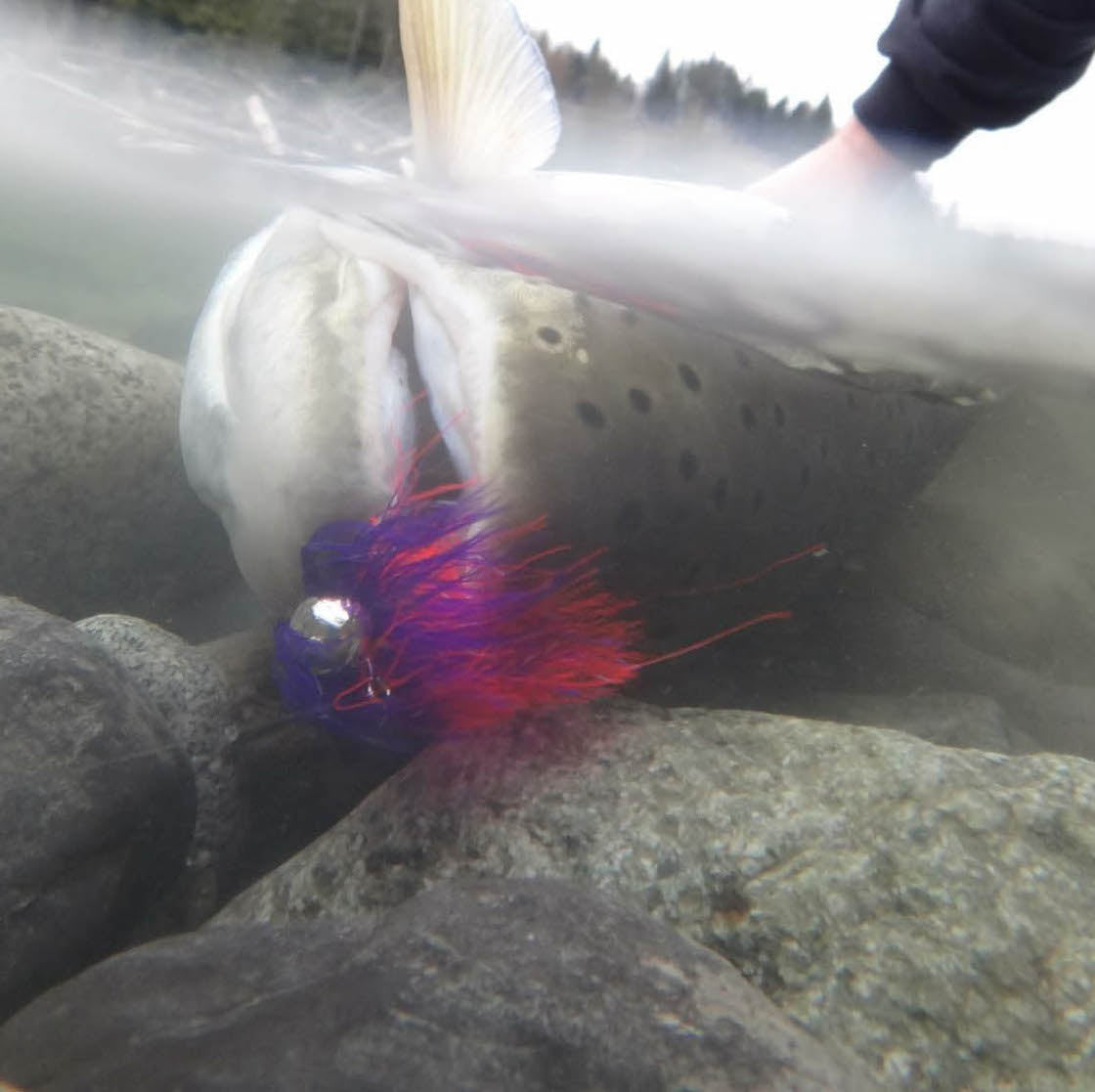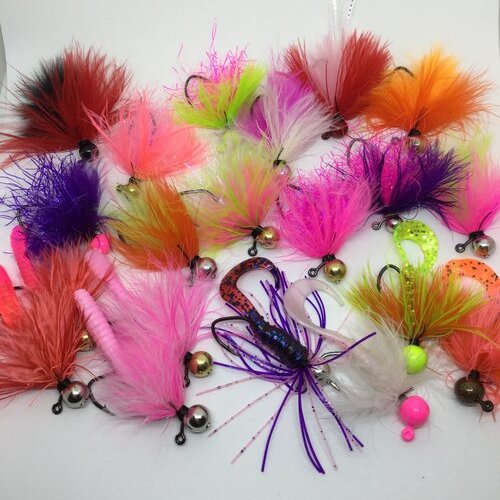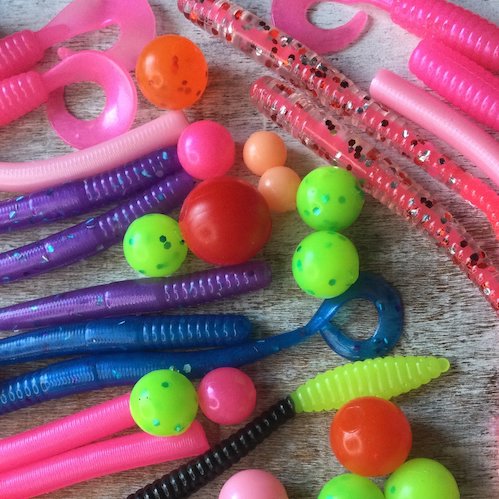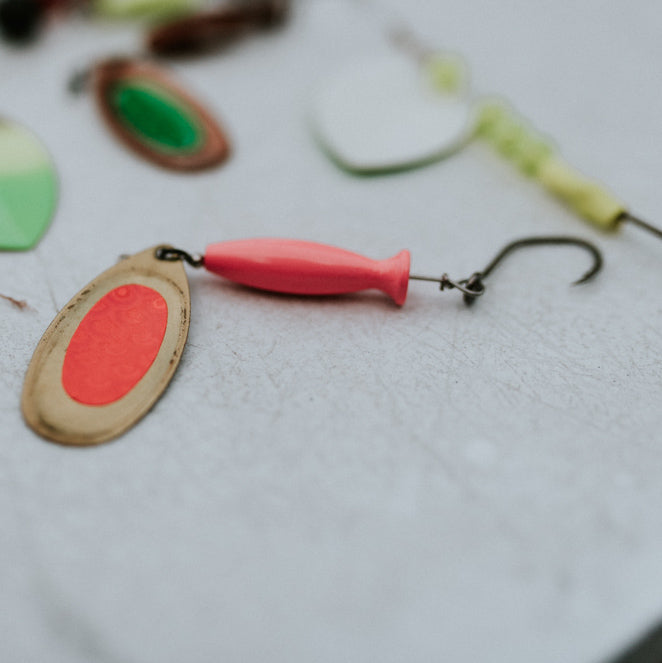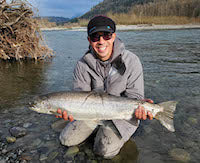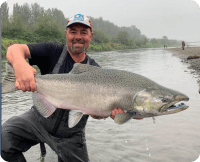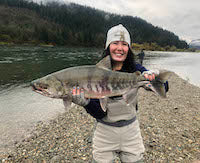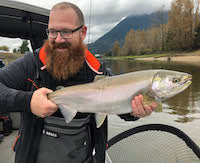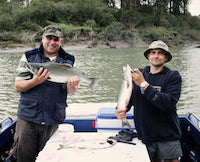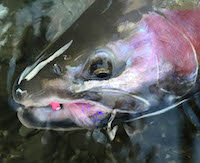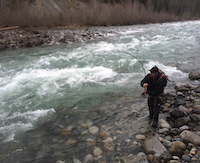In my many years of Steelhead fishing, one of the keys to my success has been using presentations that have a high landing ratio. Early in my Steelhead fishing adventures, I often used bait. While highly effective at getting bites, I was never satisfied with my hook up to landing ration. By exploring different hook styles, sizes, and brands, I was able to develop a system that produced a far higher landing ratio. Other factors that I found important were rod action, powerful hook sets, and learning to properly ‘play’ the fish.
Fast forward some years, and I discovered the effectiveness of float fishing jigs for Steelhead. Aside from being highly effective at hooking fish, I experienced a landing ratio using jigs that I had not achieved with any other method.

As many know, I started my business of tying and selling float fishing jigs in 2004, and worked hard to deliver jigs that truly excelled in both getting hookups, and landing fish. Correct hook design was a big part of this, but most importantly was how the jigs would ride in the water, which would determine the hook placement. Hooking the fish in in the upper part of the mouth (and almost always in the hardest part of the mouth) resulted in a phenomenal landing ratio!
Going back to my earlier Steelhead fishing days, I would sometimes use a soft egg known as a ‘Jensen Egg’. While I did achieve success with the Jensen Egg, I often found other lures to both hook and land more fish. So the Jensen Egg became something I would fish through a run last, and expectedly the results were limited.
One day while fishing a now closed river that once held many fish, I had an experience that would set me on the path to using a new technique.
I had been fishing a deep pool that was full of Steelhead! I had hooked six fish in this pool using jigs. Being quite satisfied with my success in that spot, I was ready to go explore other water.
As I was looking at the run, I noticed Steelhead in the shallower tail out, rising up the water column and dropping back down. Excited and shaking, I started to run my jigs through this tail out. After 30 minutes of trying every jig in my box, frustration set in.
At this time I was a very die hard jig fisherman. I was blown away that these tail out fish would not bite any of my jigs! Being so committed to the jig, I seldom carried much else in my fishing pack. As I scoured my side pack for other options, I found a small plastic baggie of hard plastic beads I had purchased. I hadn’t given the hard beads a try before, as I was unsure about their effectiveness, and their hard nature seemed unnatural.

Ready to try anything, I quickly hooked up a hard pink bead using the ‘pegging’ method I had read about in STS magazine. The method was to run the bead on your line and fix it 2” from the hook using a toothpick.
Fast forward an hour, and I had hooked six more Steelhead in that tail out! The unfortunate part, was that I only landed two of the six fish.
In the following years, I slowly added hard beads to my game, however I was never able to achieve the landing percentage I desired. I toyed with pegging distance, hook size, hook style… you name it! As a Steelhead fishing guide, many frustrated days were had, with fishing clients hooking a Steelhead on a bead, only to lose the fish.
I felt that pegging the bead was resulting in a poor hook placement outside of the fishes’ mouth. My theory was that the fish being hooked on the outside of the mouth was allowing the hook to pull free from the pressure of the fight.
Around this time a few companies were selling soft beads as an alternative to the hard beads. I thought back to the old Jensen Eggs, and wondered why it took so long for the soft bead revolution.

Armed with the soft beads, I hoped that this was the bead answer to improving that landing ratio. Unfortunately, I discovered the exact same scenario. Many fish hooked…and many fish lost.
As a fisherman who is constantly trying new things, I attempted solving this puzzle. The soft beads, particularly the larger ones, were quite similar to a spawn sack. When using spawn sacks, we typically dangle it below the hook. This got me thinking, “Why not dangle a soft bead below the hook by running it directly on the hook?”
Putting this technique into action reaped the rewards I had been seeking! Ten straight Steelhead LANDINGS on the soft beads! I was ecstatic. Could I have solved the poor landing ratio issue??!
Talking with other friends who fish beads, they explained that ‘pegging’ was a technique employed in an effort to avoid deep hookups that may cause harm to the fish.
Not wanting to injure or harm the wild fish, I kept a close watch on where my fish were hooked. My finding was that none of my fish were hooked deep. In fact, they were almost always hooked in that ideal hard upper mouth, very similarly to jig fishing placement.
With this new development, my success with soft beads was dramatically improved. Now I had two last issues to solve. The soft beads that I was using were too soft. They were constantly falling off the hook- and they had a tendency to float, which made for poor fishing in pocket water and fast water.
Being a handmade tackle producer and a tinkerer at heart, it became obvious that I needed to make my own. This began a journey to creating the perfect soft bead for my applications. After much experimenting, I conjured a soft bead that is soft and supple, yet strong enough to remain intact on the hook reliably until your fish is hooked (and sometimes remains in place even throughout the battle!). This blend of soft plastic has exactly the right balance of sink and buoyancy to get the bead right into the bite zone, far better than any others I have used.

As my bead sales have taken off, I have had to work hard at converting people to running the bead directly on the hook. I have found the most convincing explanation to achieve this conversion, is by pointing out the similarity between this technique, and the long trusted technique of fishing a roe bag directly on the hook for Steelhead.
As with running a roe bag, when using soft beads, match your hook size to your bead size. This is the formula I found works well:
8mm bead: #4 hook
10mm bead: #2 or #1 hook
12mm bead: #1 or 1/o hook
14mm bead: #1 or 1/o hook
16mm bead: 1/o or 2/o hook
19mm bead: 1/o or 2/o hook
As far as hooks go, my current favourites are Owner hooks. My preferred style is the NO ESCAPE model, but I also employ the CUTTING POINTS often.
I hope my story helps to improve your Steelhead game. A nice perk with this bead fishing method, is that it makes changing beads extremely quick and easy, which is always a good thing.
Check out our collection of soft beads here! ---->
Tight lines and Bent Rods!
~Rod Toth



